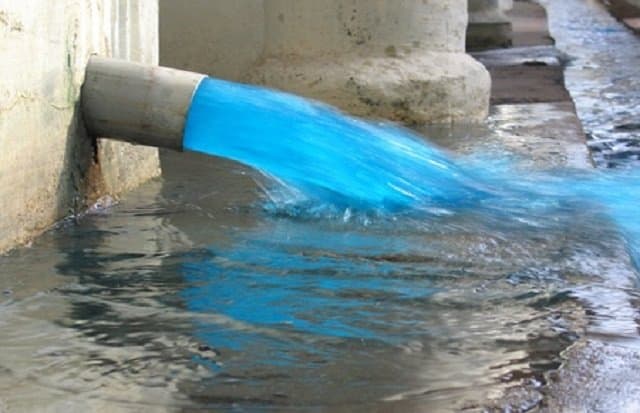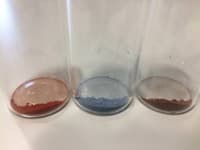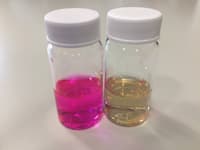Scientists develop a New Material to get rid of harmful dye pollutants from water using Solar Energy
With the accelerated industrial progress of our modern world comes the bane of disposal of environmentally harmful wastes as synthetic dye pollutants, released at a rate of nearly 300,000 tonnes a year into the world’s water. Researchers from Energy Safety Research Institute (ESRI) at Swansea University, U.K hold the key to the problem in the form of a novel, non-hazardous photocatalytic material.

The said material effectively removes dye pollutants from water, adsorbing more than 90 % of the dye and enhancing the rate of dye breakdown by almost ten times using visible light. The composite material as a combination of tungsten oxide and tantalum nitride, also provides a huge surface area for dye capture, being less than 40 billionths of a metre in diameter. The material was synthesized by heating the reaction mixture at high pressures inside a sealed container which involved growing ultra-thin “nanowires†of tungsten oxide on the surface of tiny particles of tantalum nitride. It further proceeded to break the dye down into smaller, harmless molecules using the energy provided by sunlight, in a process known as ‘photocatalytic degradation’.
Having removed the harmful dyes, the catalyst can be simply filtered from the cleaned water and reused. Due to the exchange of electrons between the two materials, the test dye used within the study was broken down by the composite at around double the rate achieved by tantalum nitride on its own, while tungsten oxide alone was shown to be incapable of dye degradation.

Powders of tantalum nitride nanoparticles (left), tungsten oxide nanowires (centre) and the tantalum nitride/tungsten oxide composite (right)
While the phenomenon of photo-catalytic degradation of dyes has been in investigation for quite some time now, the development of materials capable of absorbing the ‘visible part’ of the solar spectrum has been recent. Other materials, such as titanium dioxide, are also able to break down dyes using solar energy, but their efficiency is limited as they only absorb higher energy, the ultra-violet light.

Rhodamine B test dye used in the study, both before (left) and after (right) photocatalytic degradation by the composite
By making use of a much greater range of the spectrum, new materials such as those used by the ESRI team are able to remove pollutants at a far superior rate. The researchers aim to improve on the material further and begin work on scaling up the synthesis for real-world application. We’re also exploring its viability in other areas, such as the photocatalysed splitting of water to generate hydrogen, quoted Dr. Jones, lead researcher of the study. The research is published in the journal Scientific Reports.
Source:#-Link-Snipped-#

The said material effectively removes dye pollutants from water, adsorbing more than 90 % of the dye and enhancing the rate of dye breakdown by almost ten times using visible light. The composite material as a combination of tungsten oxide and tantalum nitride, also provides a huge surface area for dye capture, being less than 40 billionths of a metre in diameter. The material was synthesized by heating the reaction mixture at high pressures inside a sealed container which involved growing ultra-thin “nanowires†of tungsten oxide on the surface of tiny particles of tantalum nitride. It further proceeded to break the dye down into smaller, harmless molecules using the energy provided by sunlight, in a process known as ‘photocatalytic degradation’.
Having removed the harmful dyes, the catalyst can be simply filtered from the cleaned water and reused. Due to the exchange of electrons between the two materials, the test dye used within the study was broken down by the composite at around double the rate achieved by tantalum nitride on its own, while tungsten oxide alone was shown to be incapable of dye degradation.

Powders of tantalum nitride nanoparticles (left), tungsten oxide nanowires (centre) and the tantalum nitride/tungsten oxide composite (right)

Rhodamine B test dye used in the study, both before (left) and after (right) photocatalytic degradation by the composite
Source:#-Link-Snipped-#
0
